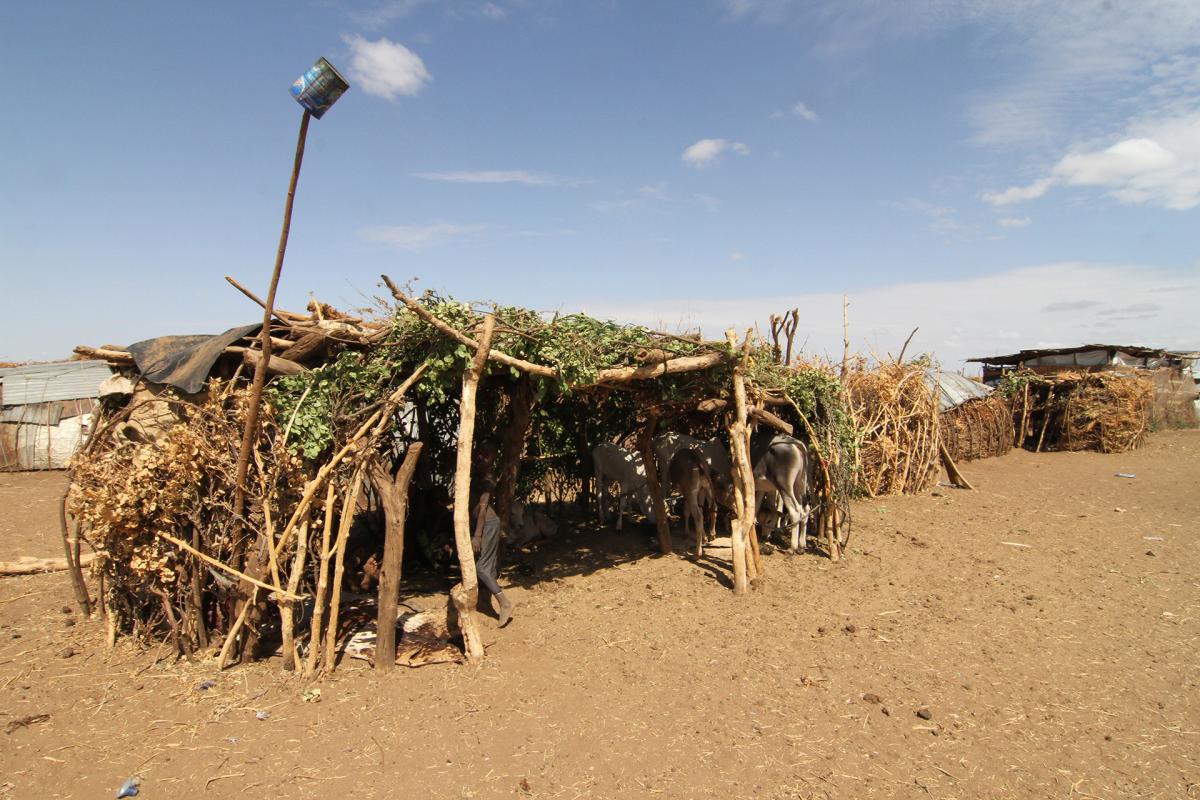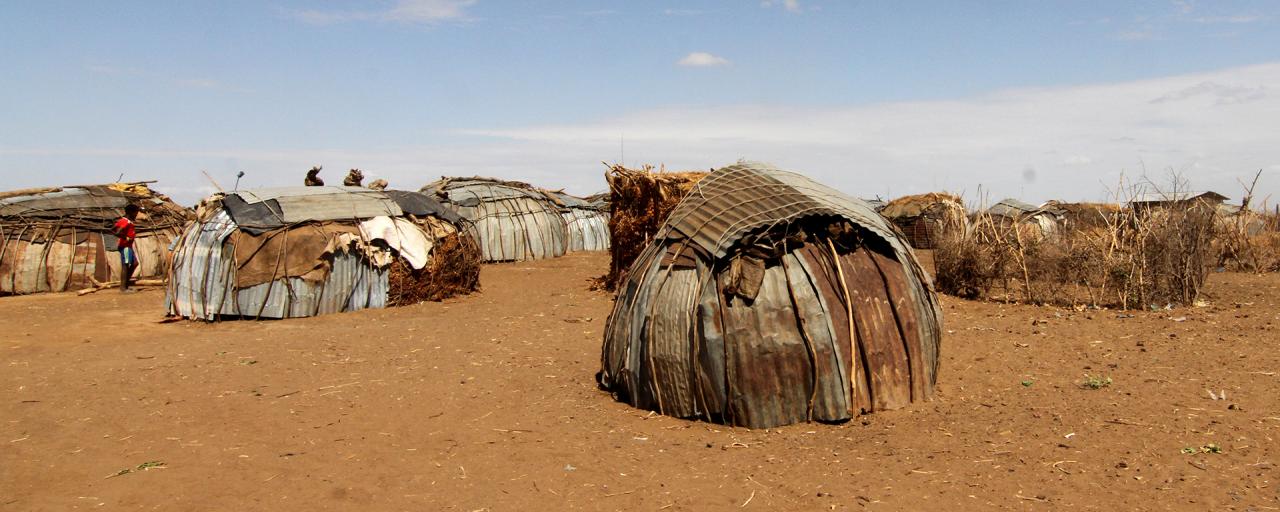Submitted by SafariADV on Sat, 2019-09-21
This morning we wake up and, after breakfast, we leave by our car and head South-West, we have to go to Omorate; along the road we meet no one, only a few vultures busy feeding on a carcass.
We take about an hour to reach Omorate, from here we take a small boat that takes us to the opposite bank of the Omo River; there is a little current and the punt seems to meet a bit of a struggle to reach the opposite shore.
Once off the boat we meet some inhabitants of the Dassanech village we are going to visit, among them there is also the boy who will guide us around his village.
The first thing that amazes us is that he speaks perfect English, we tell him and he proudly tells us “Now there is the school on the river side where the village is, so it is easy for children, when I was a child the school wasn't there and I had to swim across the river every day" and then he adds "I didn't have the money to take the punt, so I used to swim and pay the punt so he could bring me the books and clothes".
Note that the Omo River has a fairly good current and is infested with Nile crocodiles, so it was not a very simple thing; moreover, we don't speak of centuries ago, he is about 20 years old, so he refers to only a few years ago.
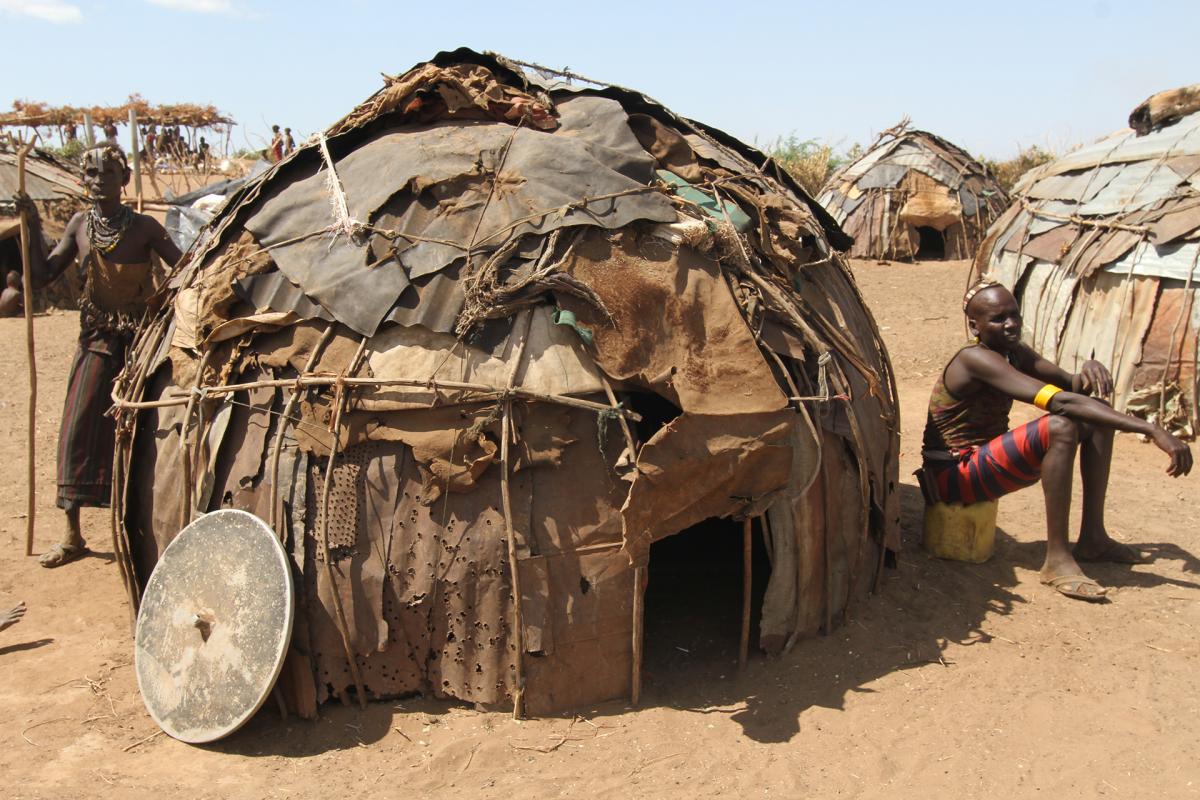
We arrive at the Dassanech village and find ourselves under the scorching sun without even a hint of shadow; we are in the Southernmost area of Ethiopia, very close to the border with Kenya and Lake Turkana, here the climate is semi-arid and the sun is relentless.
As soon as we enter the village some people come to meet us, some of them want to be photographed, others are simply curious.
Our guide tells us that in the past the Dassanech traded with the Turkana but then they started fighting over the pastures and stealing each other livestock and then broke off relations.
We notice almost immediately that the Dassanech physically look a lot like the Samburu and the Masai.
The Dassanech can have all the wives they want, the important thing is that they manage to support them; every wife has her hutwhere she lives with her unmarried children.
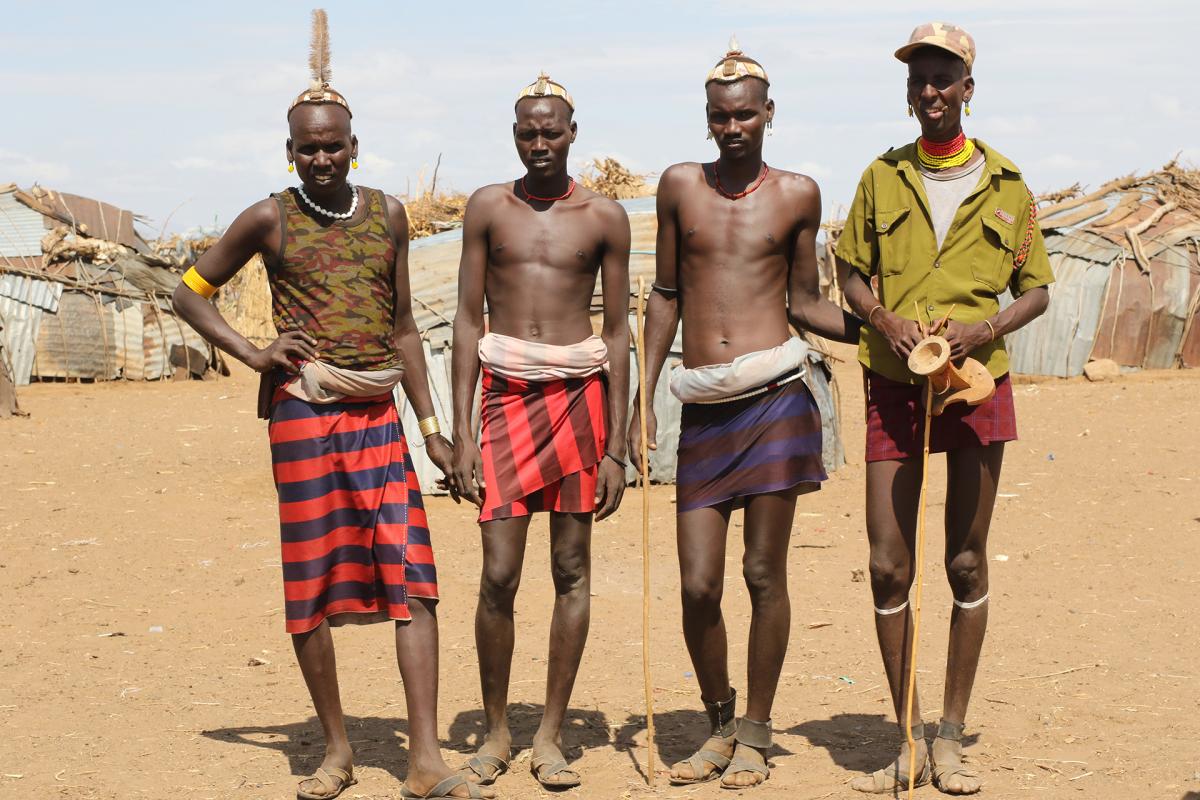
The huts have a dome shape, the load-bearing structure is made of crossed woods and, at one time, was covered with skins, but now most of them are covered with metal sheet; this is because the cattle has reduced a lot in number and consequently the skins of the animals are scarce, but the sheet under this scorching sun make the huts uninhabitable, therefore, during the day, the women stand under a roof, a sort of collective hut,made of branches and covered with straw or leaves.
A peculiarity of the Dassanech, that distinguishes them from many African populations, is that they cook inside the hutand not outside and this because they consider the preparation and consumption of meals as an intimate moment that must not be shared with the rest of the village.
The village is protected by a fenceand, inside there are a series of smaller enclosures that are used to keep the livestock.
Some girls approach us and our guide explains how to distinguish unmarried girls from married ones, it is very simple just to look at their hairstyle.
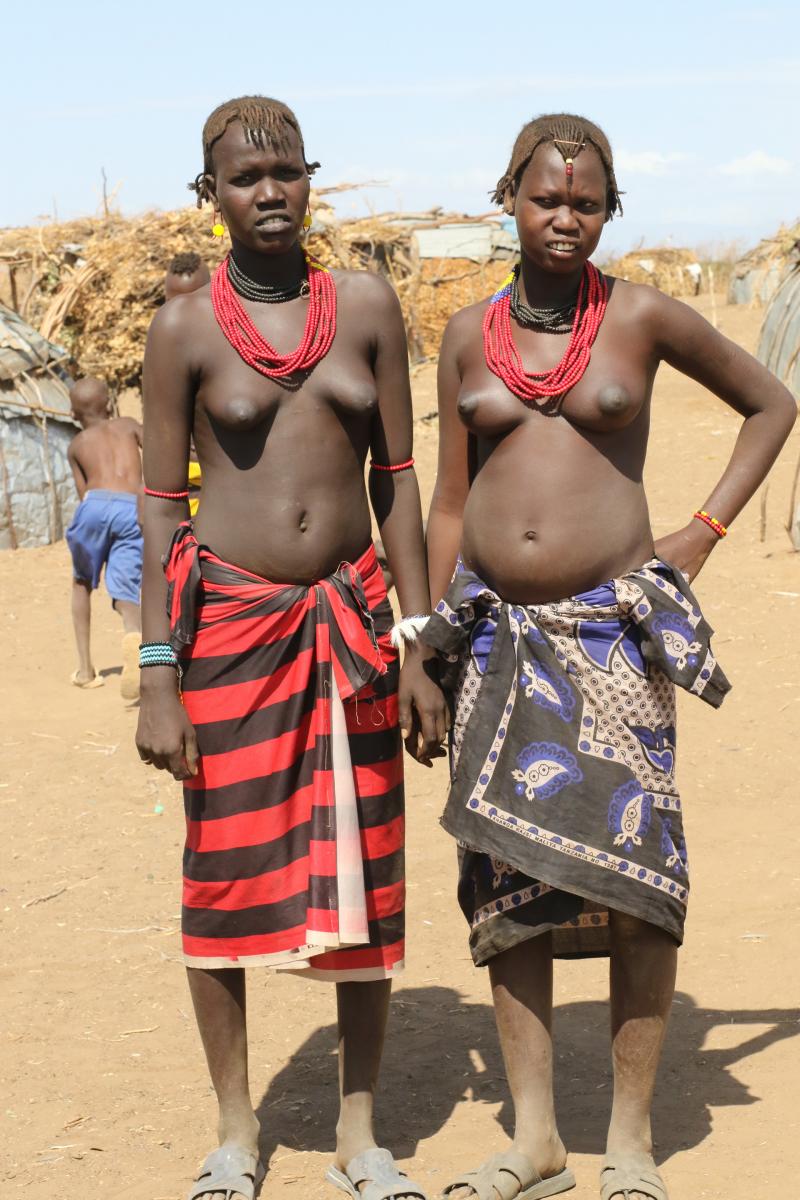
Some of them have scarifications and the guide tells us that the men who killed an enemy make the scarifications and carry them as if it were a medal for valor and even his relatives can scarify in his honor; they are usually practiced on the chest, on the abdomen and on the shoulders, to women only on the shoulders and on the back.
The Dassanech also wear many accessories and some have a kind of lower lip piercing, but both are done just for beauty.
Originally the Dassanech were only breeders, then, as a result of the change in the climate, the pastures started to run low, so they started to practice subsistence farming and, subsequently, also fishing.
The Omo Riveris of vital importance for the Dassanech because it supplies water for men and for livestock, for cultivated fields and it is possible to fish there; not by chance the name of the town of Omorate means "the river that gives food".
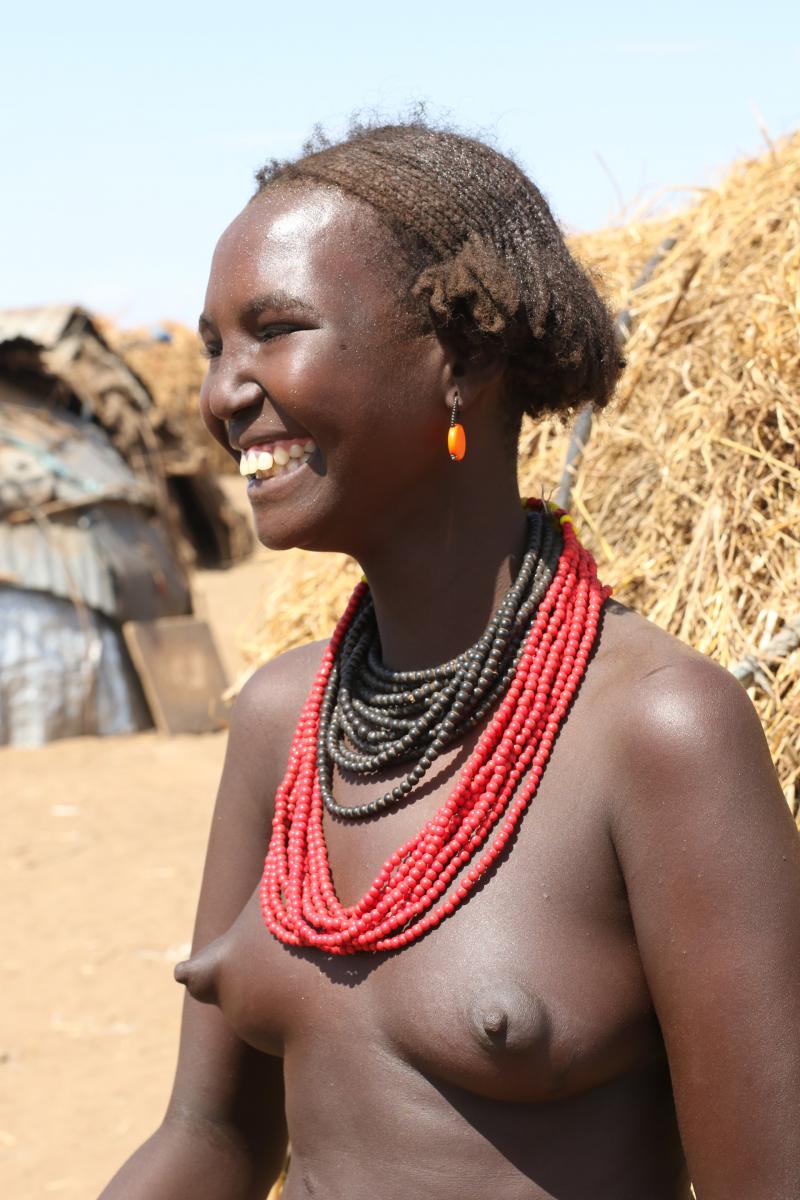
The Dassanech are animists, they believe in ancestors and families of spirits such as snakes, scorpions and natural phenomena such as wind and rain.
After visiting the whole village we shelter under a collective hut to recover a little from the heat and the sun; all the children of the village, who have been following us all the time, sit there in the sand with us.
When we cross the village to return to our car some women have started dancing, we are not sure that it is a traditional dance with any particular meaning or it is just a moment of joy, but we are pleased to be greeted in this way.
We greet our Dassanech friends, get in the car and return to Turmi.
